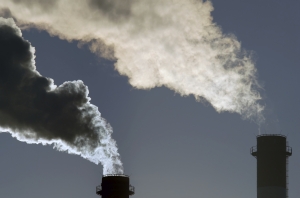The ALP is expected to announce a plan to tighten the government’s safeguard mechanism framework, requiring Australia’s largest emitting industrial companies to reduce emissions to meet a 45% economy-wide emissions target.
In this update, we provide initial observations on the “Safeguard 2.0 market”, including supply-demand balance through to 2030 and price implications.
To better understand local carbon price formation, we review the Australian carbon price under the former CPM, modelling the interaction between domestic and international offsets from 2013-18 (should it have remained in effect) and future Safeguard 2.0 market dynamics.
- Excluding the electricity sector, the safeguard mechanism covers around 200 high emitting energy, manufacturing, and transport facilities. Emissions from these facilities have grown 17 per cent since 2014-15 – and could overtake electricity as Australia’s largest emitting segment mid next decade.
- Assuming a uniform reduction in baselines is applied to safeguard facilities, consistent with a 45 per cent emissions target, we model a tight market under Safeguard 2.0, particularly for fugitive emissions sectors, where emissions have increased.
- Given the combination of declining baselines versus emissions growth, we estimate a Safeguard 2.0 market could face a cumulative short of around 350 Mt from 2020-30.
- The shortfall is assumed to be made up by the lowest cost of: 1) domestic Australian offsets; 2) international offsets; and 3) direct abatement, with the volume and type of offset demand having a large bearing on the future Australian carbon price.
- While international offsets were once considered the cheapest source of emissions reductions, Certified Emissions Reductions (CERs) are no longer allowed in most markets, while price rises in Europe (A$30/t) will reduce future EUA use in Australia.
- As a result, we expect international offsets to be priced out of a Safeguard 2.0 market, with domestic ACCUs the marginal source of emissions reductions for Australian entities.
- The Safeguard 2.0 price is therefore likely to converge with ACCU prices, reflecting the balance between underlying supply and demand – and the volume and cost of emissions abatement opportunities – with a local carbon price potentially around 60 per cent less than our current EUA price expectations.
Please access this report via the Downloads box below.
Kind Regards
The RepuTex Team
Australian Emissions Markets















